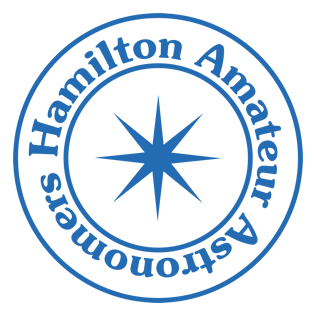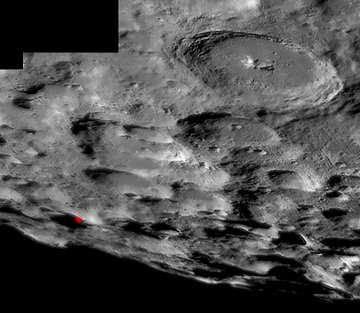Ann, Alex, Steve and Don went to the Oakville Sixers-Seconds camp last Friday to assist with the Astronomy Badge for the Cub Scouts, aged 8-10 years old. Brenda Frederick, HAA member and also the Akela, was there in her official capacity, running the camp, and was very helpful making sure we were well supported by the leaders. It was raining, so the skies were not inviting, but in the spacious indoor chapel, a pair of stations were set up.
At one end of the room, Don had Stellarium running on the projector, and was able to give the kids a sky tour, and help them learn their constellations, finding north, etc. The program conveniently can be configured to omit the lines that are often found in sky charts. Meanwhile, Ann, Alex and Steve set up at the other end of the room, to present information about the Solar System, meteorites, comets, and asteroids, legends, and astronomy equipment.
It was encouraging that most of the kids could already name the 9 planets in order (but they knew about Pluto, whose goofy name has got it disqualified from the list).
There were 40 cubs at the camp, and they were divided into 2 main groups. One group was doing uniform and badge work elsewhere, and the other group was doing the Astronomy badge with us. For the astronomy part, we divided them further in half, so we presented to small groups of 10 or so, for about 20 minutes, then switched to the other half. Then we did the whole thing again for the other main group.
The Cubs had never seen comet Hale-Bopp. They missed a treat. I hope we see another great comet in a few years.
Ann and Alex had brought a chunk of a meteorite that fell in Argentina, for the Cubs to handle and pass around while we talked. They were rightly impressed with the weight of the meteorite. Ann explained that meteors look fast, but comets move very slowly indeed by comparison, and the kids understood that it was due to parallax. She also talked about meteor showers, being dust that is found along a comets orbit, that the earth happens to pass through once a year.
Comets and asteroids can sometimes hit the earth, but not often. Ann mentioned that the Sudbury Impact Crater had lots of nickel because of a meteor.
We then discussed some Iroquois legends about the constellations. Suffice it to say that the legends of the Iroquois are pretty cool. Especially the one about Orion. I would like to see it presented with more detail sometime. According to the legend, Orion works 6 months of the year keeping the sun high in the sky. When the sun is far from Orion, he rests, and his son does the job, not nearly as well, so the sun rides low in the winter sky, but Orion is seen at night resting.
There’s truth and lessons there at several levels.
I brought along some equipment we use during astronomy, partly on the off chance the skies would clear. The Cubs had a great time with my 25×100 binoculars, looking both forward and reverse through them. It was important to explain that we don’t touch the lenses of optical equipment, and why. I explained how binoculars magnify, but are large because otherwise the magnified image would be very dim.
We also showed them star charts, and explained that Messier collected a list of non-comets, that were actually pretty interesting to look at.
Don’s green laser was a hit for pointing at his projected star charts. Mine was out of service (needed a battery charge) but got the idea across. We explained how pointing in the sky with a laser makes it easier for a group to see where you are pointing.
Several of the leaders also tried the Binoculars. After the presentations were done, we packed up and then went for ‘mug up’ in the dining hall, where timbits (an HAA necessity; thanks, Brenda) and hot chocolate with marshmallows, and Rice Crispies Squares, were to be had. We also had a chance to listen to the leaders talking to the Cubs. It’s a well organized event and well worth attending. I had a great time, and got home a bit after 11 PM.
If you have volunteered at public events, and are interested in participating in this valuable scientific and cultural outreach, contact me and I can let you know when these invitations come up.




